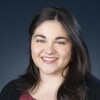What does it mean for a high school student to read well? The answer is multilayered.
Teenage readers need a solid foundation, encompassing the ability to read fluently and understand grade-appropriate vocabulary. But they also rely on more nuanced skills.
One of these is disciplinary literacy—the idea that experts in different disciplines, such as history, science, and literature, communicate their ideas in distinct ways.
91ֱ�� published a special report on developing disciplinary literacy in older readers in October, and hosted a forum on the same subject Dec. 12.
Two experts joined to talk about reading in history and social studies: Joel Breakstone, the co-founder and executive director of the Digital Inquiry Group, a nonprofit social studies curriculum organization, and Matt Sekijima, a social science teacher in the Los Angeles Unified School District and a lecturer in UC Irvine’s Master of Arts in Teaching Program.
Here are four key questions and insights from the conversation.
How do historians read?
Historians approach sources from the past “very differently” than the average high school student, said Breakstone.
Sam Wineburg, the co-founder of the Digital Inquiry Group, researched the literacy practices of historians as a graduate student. What he found shaped the basis of DIG’s instructional approach.
“The students generally approached the texts as they would any other text,” said Breakstone. “They read from top to bottom, and kind of read for content.”
The historians, on the other hand, investigated the source. “Who wrote this document? When? And for what purpose? Before they even looked at the content, they were considering the source,” Breakstone said. They wanted to understand, he said, “how the context influences the content.”
What does reading like a historian look like in a classroom?
It might mean asking students to think about the events that occurred right before—or right after—someone wrote a specific document.
For example, Breakstone said, in a 1775 diary entry, British officer Lt. John Barker talks about losing control over his men.
“That makes more sense when you think that the happened a few years before, and British officers were put on trial,” Breakstone said. “Barker might be more willing to say that his men were out of control than to take responsibility for what just happened.”
Understanding this perspective can help students parse the varying viewpoints of historical actors and develop a clearer picture of what happened in the past.
How can teachers foster these skills?
There are questions that students can ask of all texts, said Sekijima. What’s the author’s background? What biases might they have? “Multiple biases can exist simultaneously,” he said.
It’s important for students to understand that everyone has a point of view, and that there’s no such thing as a “neutral” narrator, he added.
Teachers can emphasize that students shouldn’t write off sources with a bias, Breakstone said.
“What we want to push students to think about is the muddy middle,” he said. “It’s not to say that once we know that the source has some sort of perspective, that doesn’t mean it’s not useful. It’s just, we need to take that into account, right?”
Teaching this way also requires making centuries-old primary sources accessible to students, Breakstone said.
“Historical documents were not written with adolescents in mind,” he said. “For students to be able to actually access and engage in these interesting ways of reading and reasoning that we’ve talked about, we need to make sure that we scaffold them.”
Most students don’t go on to become historians. So are these skills still valuable?
Students can use sourcing practices to ask: Who’s behind this information? What perspective do they have? for all kinds of information, not just historical documents, Breakstone and Sekijima said.
In Sekijima’s class this year, he asked students to compare the home pages of different news sites after one of this year’s presidential debates, evaluating what information was highlighted, what was left out, and how the different outlets presented candidates. The exercise demonstrated how journalism contributes to public perception.
Other applications are even more proximate.
When students repeat a conspiracy theory that their peers told them, or even repeat a rumor that’s “floating around the school,” Sekijima asks: “Did you source that? Did you corroborate that?”
The immediate, real-world application shows, “this is exactly why we do this in the classroom,” Sekijima said. “This is not theoretical.”






